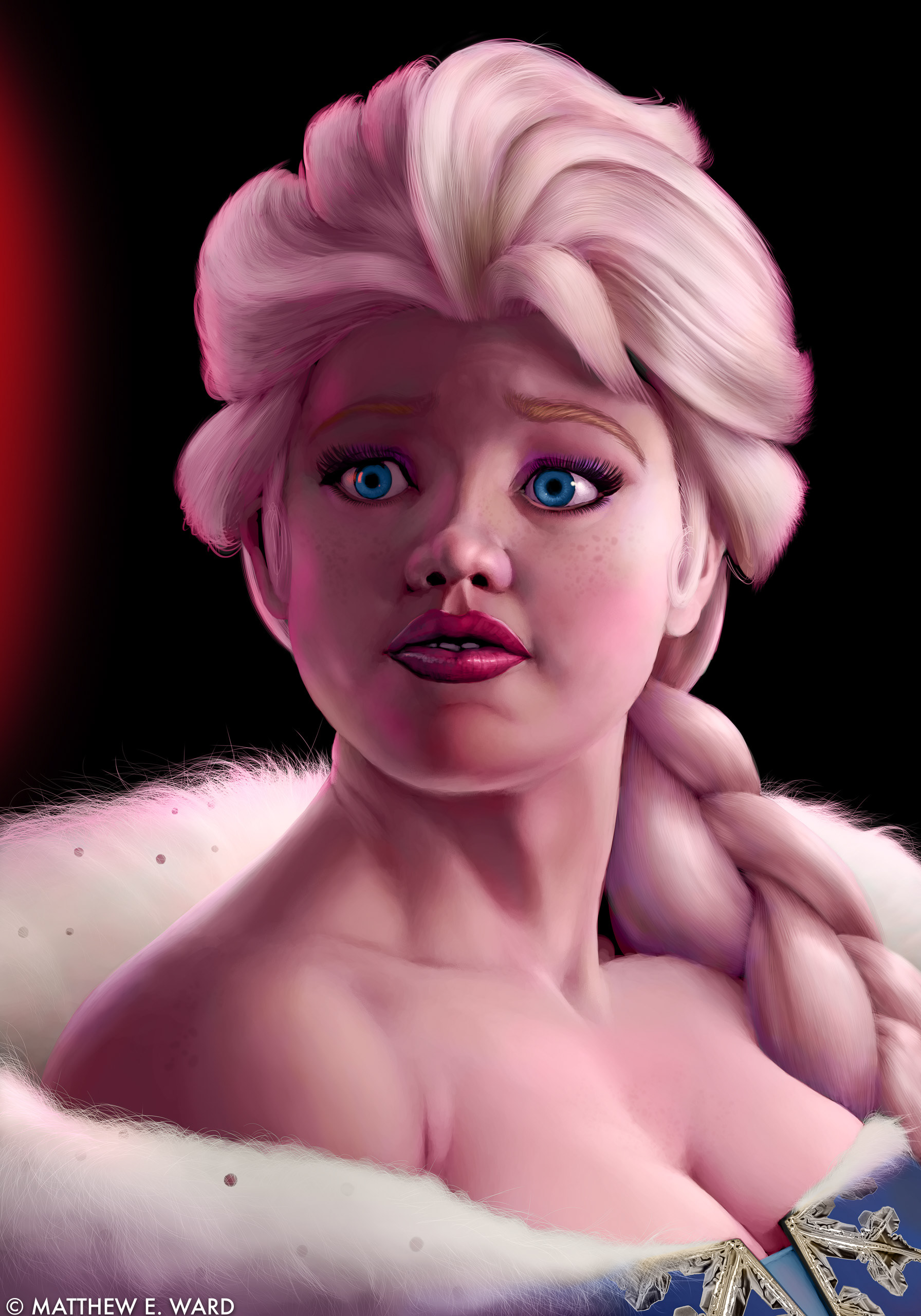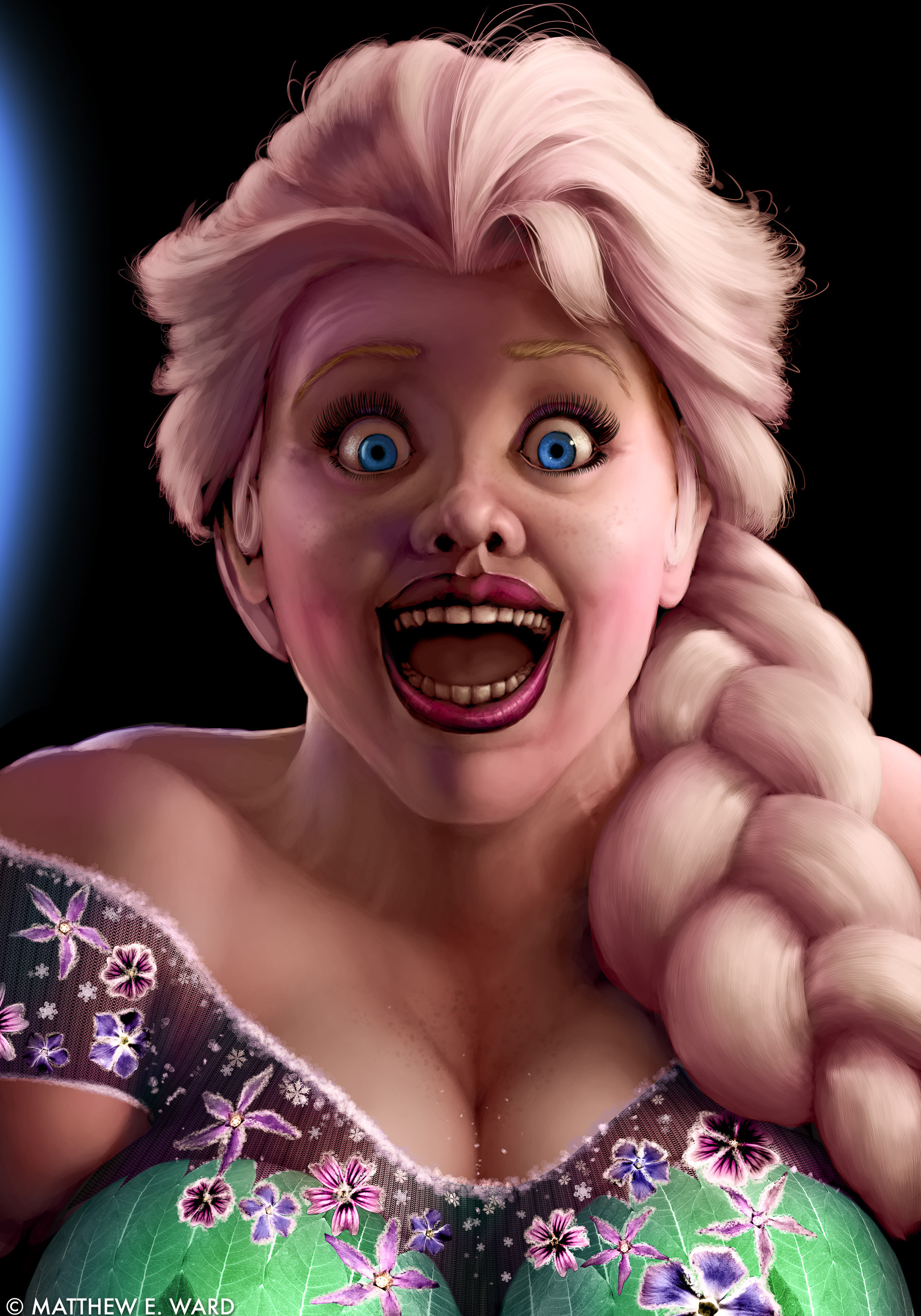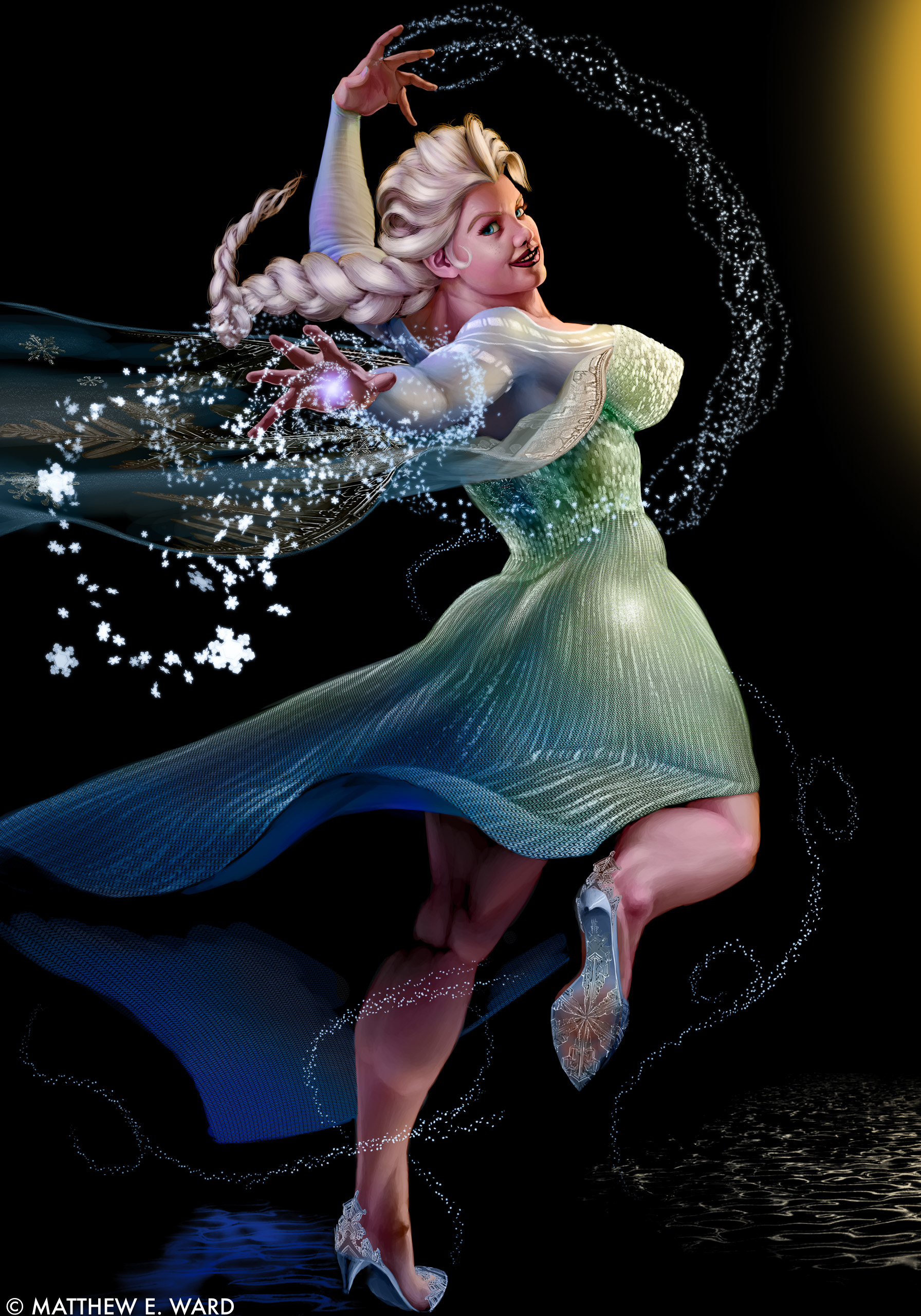PANEL SUMMARY




This series of portraits is based on official Disney ad art and frame-grabs from the full-length feature Frozen, and the short films Frozen Fever, and Olaf's Frozen Adventure.
In each panel, Elsa is lit by a gelled backlight which is coded to reflect her mood: indigo for power, red for fear, yellow for anger, and light blue for happiness.
Approx. 250 hrs. for the set of four. Because I'm careful. (And lazy.)
I feel like I've gotten a bit more confident about my brushstrokes; I usually finish these pieces with a duplicate layer with gaussian noise & blur filters and the blend mode set to overlay. It would impart some analog character to the image, give the colors more punch, and sweeten over what I thought to be my mistakes, or otherwise areas with which I just couldn't be bothered tweaking anymore.
I originally thought that starting off a painting in grayscale first and then laying on color later would result in quicker work, since I wouldn't have to agonize over having to redo a large swath of the painting in the event I determined I wasn't satisfied with color selections—because thank goodness, the real picture underneath, the tonal information, the lightplay, was all intact.
But it's like painting something twice. Every single time.
For the sake of speed, and my ambition running smack into the wall of the limits of my current abilities, I'd really like to just finish something pretty damn quick for a change.
As always with these Frozen-inspired pieces, I've based Elsa's face on 50s British pinup icon Rosina Revelle. I dug her unique fleshy features, and her cold bearing made me believe in casting her in my original piece. (Not to mention that amongst legendary naturals, Ms. Revelle's missiles were truly some of the missiliest warheads that ever cluster-bombed an underwire bra...>>)
But here, I wanted more action out of that face than my many-hundreds of stockpiled images of Rosina could supply me with a good reference. Particularly with the middle two paintings, where she hasn't been photographed anything close to stunned, stricken or squeeing. So if she ever had a squeeing or emotionally fragile nerve in that demure face, my imagination delivered the best it could.
Ice-encrusted Vinca major & Malva sylvestris blooms on the dress, with a Dogbane leaf bodice.
The full-body pinup below was inspired, in spirit, by an American icon of the same period: the Queen of Curves, Bettie Page. I also managed to inject some of Bettie's meat into Elsa's voluptuousness, with interesting results.
A nearly plus-sized figure gives a different character to the pose, which in the original Disney art was inhabited by a lithe dancer's body. There's definitely something to be said for how less bulk can contribute to the expressiveness of certain poses or choreography—common knowledge to professional dancers and thespians, news to me.
There is considerable power here, nevertheless. And with her sightline dead-on the viewer, I'm more than happy in leaning into this more primal, feral, anabolic spin on the original.
If I can get geeky, in an audiophilic way, I'll compare both pieces to two performances of Saint-Saens's Symphony No. 3, Mvmt 2a-b. One, by French conductor Charles Munch, comes across crisp, sprightly and light on its feet, very much reminding one of the use of its main melody in the movie "Babe". As melodramatic as any piece from the Romantic era, it is a confident, heroic and pulse-pounding warhorse of a concert suite—manna to lovers of military marches and the immutable bass pedal of a French Gothic cathedral's organ.
The other performance, by German conductor Herbert von Karajan, is slightly slower in tempo, more deliberate in its steps, and more—unimaginably more—dynamic in its extremes. The organ has fuller lungs, a biting shriek, and its player has longer hair. What is heroic pathos in the Munch performance, is a sublime and properly terrifying force of nature in this one, and it's impossible to imagine how this reading of Saint-Saens could wind up being set to lyrics by anthropomorphized farm animals.
This is less about the mortals on the battlefield than the clashing of self-interested Gods above them, who threaten to overwhelm and extinguish the comparatively humble terrestrial drama with their crossfire. It's what's playing in Asuka Langley's head while she's slaying angels. And it's the one I wholeheartedly prefer.
That's my Goddess.
That's my ride to Valhalla.
That's the Elsa I dream about.

